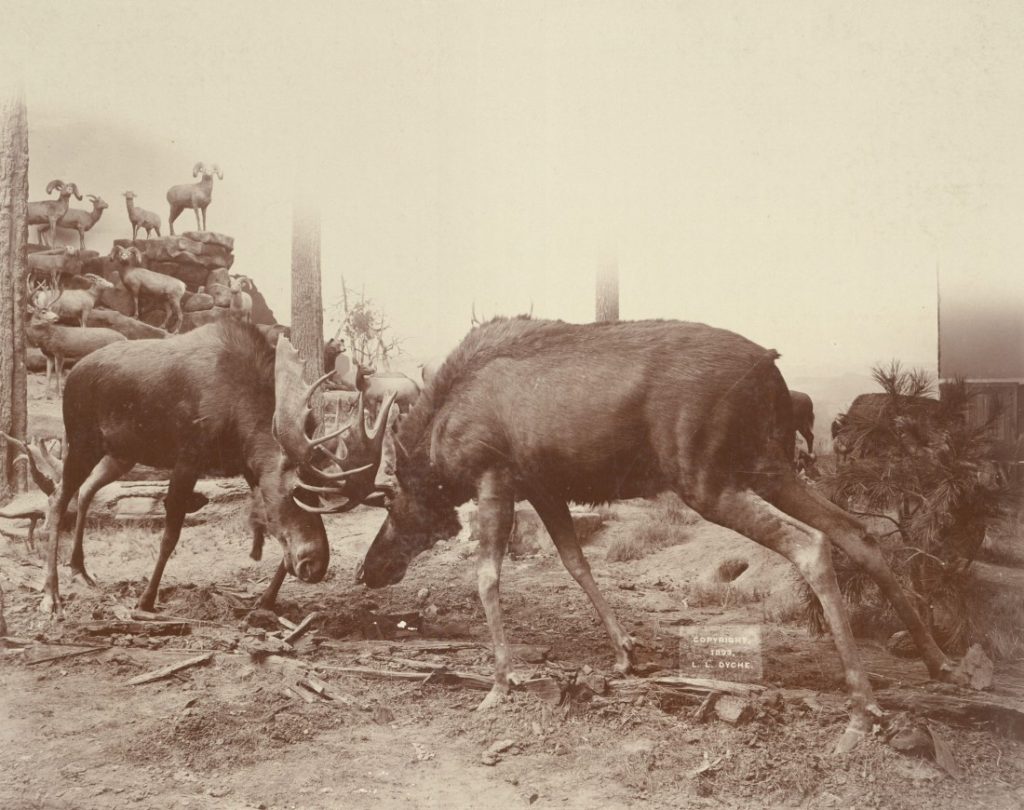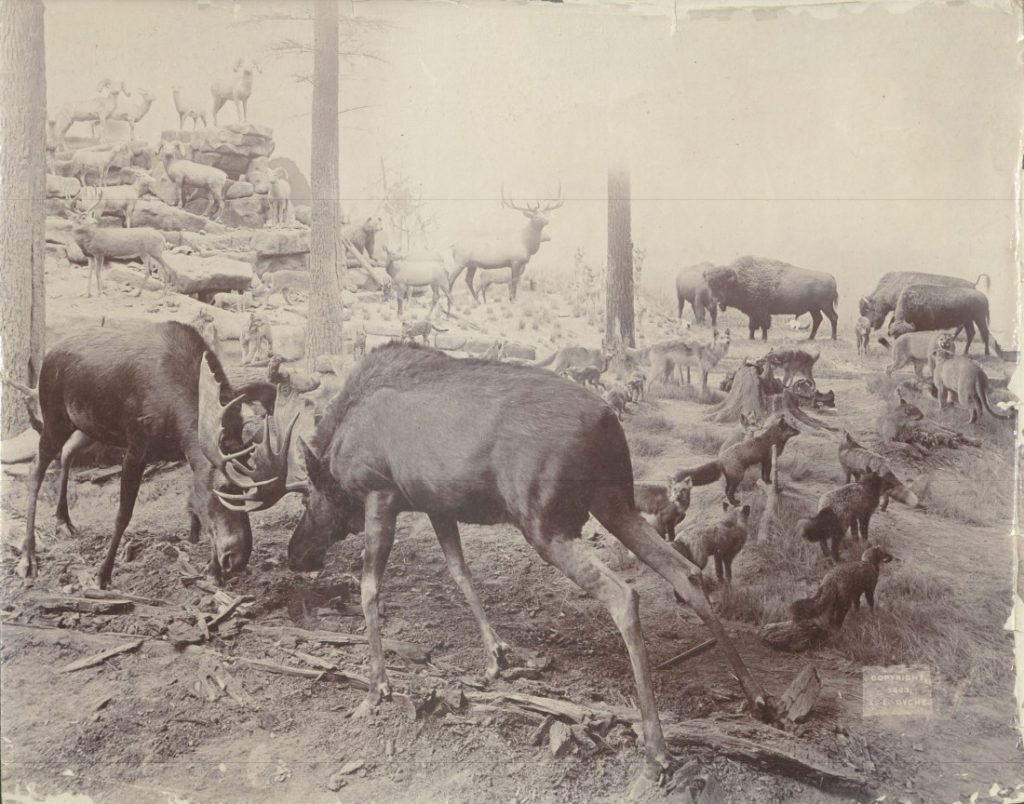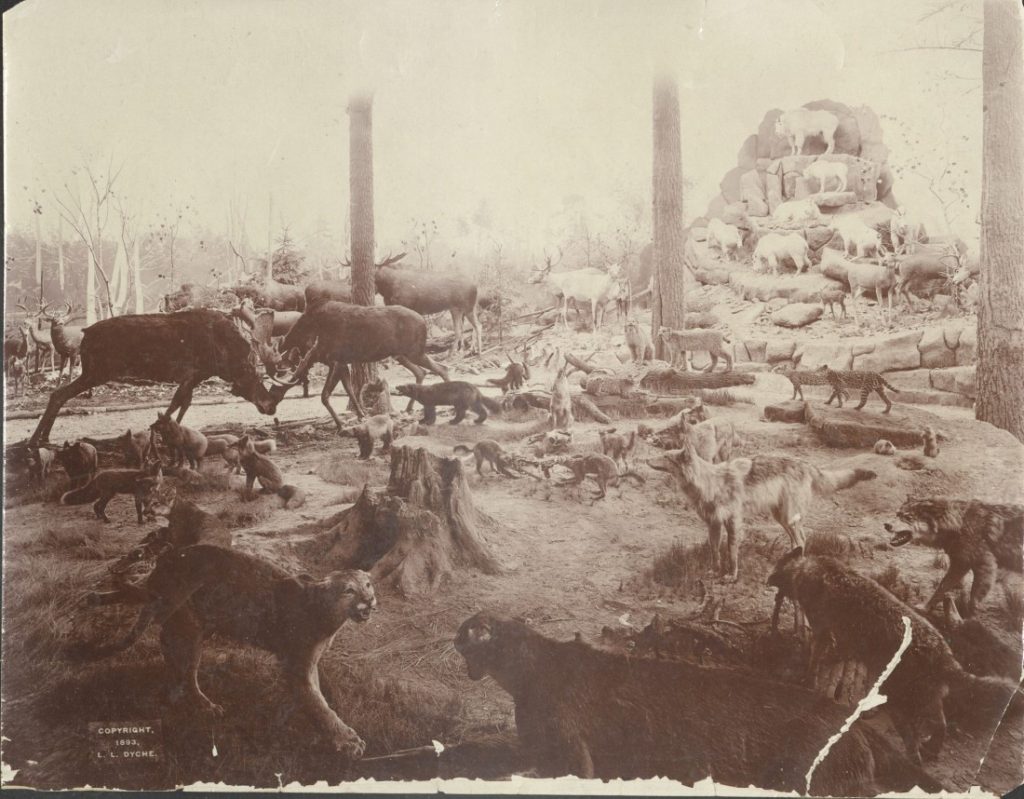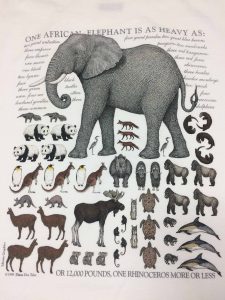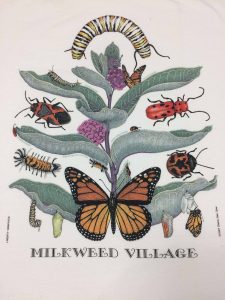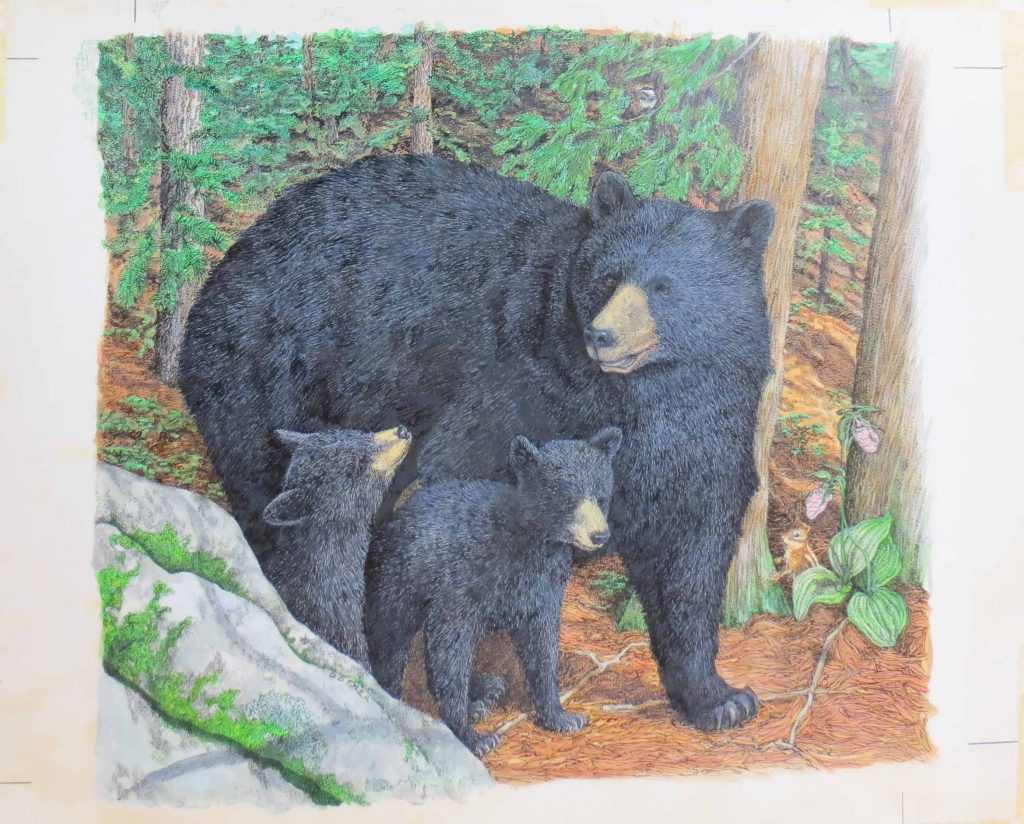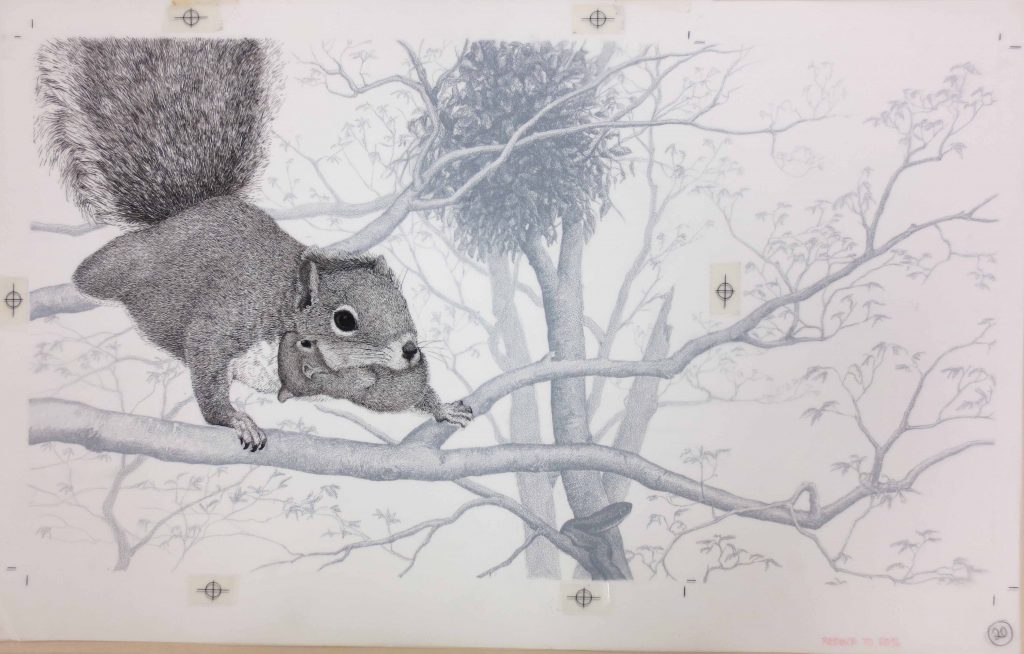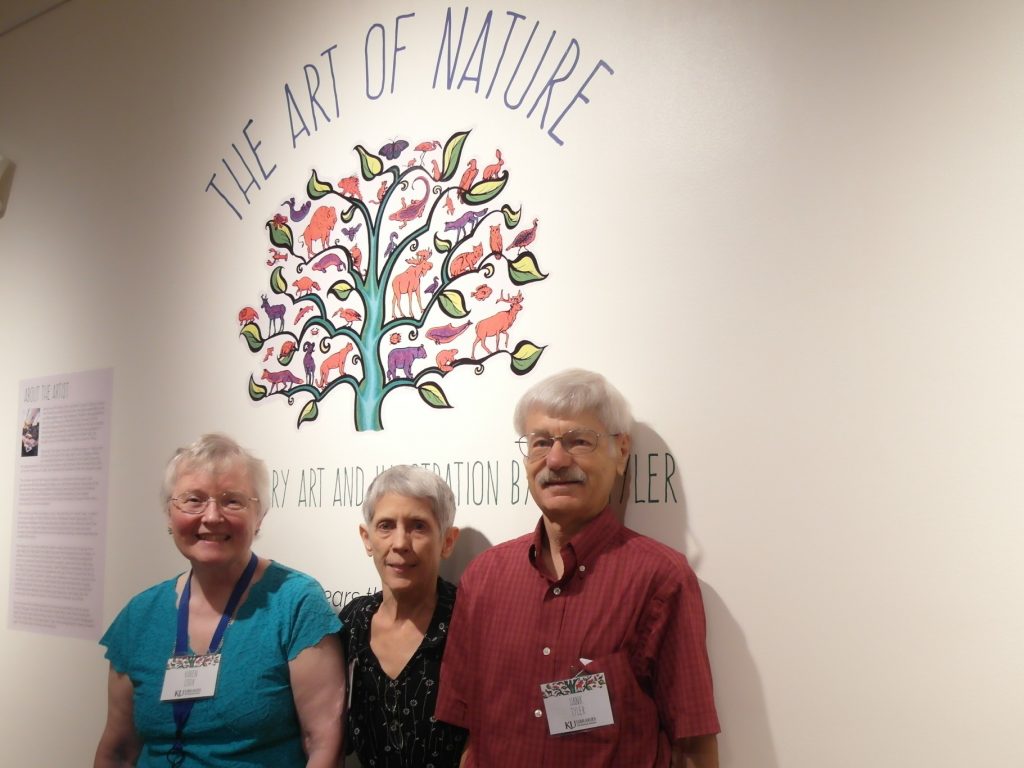That’s Distinctive!: Lewis Lindsay Dyche’s Panorama
June 2nd, 2023Check the blog each Friday for a new “That’s Distinctive!” post. I created the series because I genuinely believe there is something in our collections for everyone, whether you’re writing a paper or just want to have a look. “That’s Distinctive!” will provide a more lighthearted glimpse into the diverse and unique materials at Spencer – including items that many people may not realize the library holds. If you have suggested topics for a future item feature or questions about the collections, feel free to leave a comment at the bottom of this page.
This week on That’s Distinctive! we share some photos from the KU Natural History Museum’s collection within University Archives. In the library we house many photographs from the museum from throughout their years as well as some of their records. The photos we share this week show early displays of the museum’s panorama from 1893. From the museum’s website:
“The Panorama is an American cultural treasure, a 360-degree-view exhibit that embodies a historic first in the representation of nature for the public. As part of the official Kansas Pavilion in the 1893 World’s Columbian Exposition in Chicago, it was unique and revolutionary in depicting, for the first time, mounted groups of North American mammals in their natural surroundings. Lewis Lindsay Dyche created this exhibit on the cusp of growing scientific awareness of ecological systems and the need to conserve natural resources for the better good…the exhibit has grown over the years to include more different environs and species. The Panorama represents the university’s early efforts to document and understand the life of the planet — research that continues today through the KU Biodiversity Institute.”
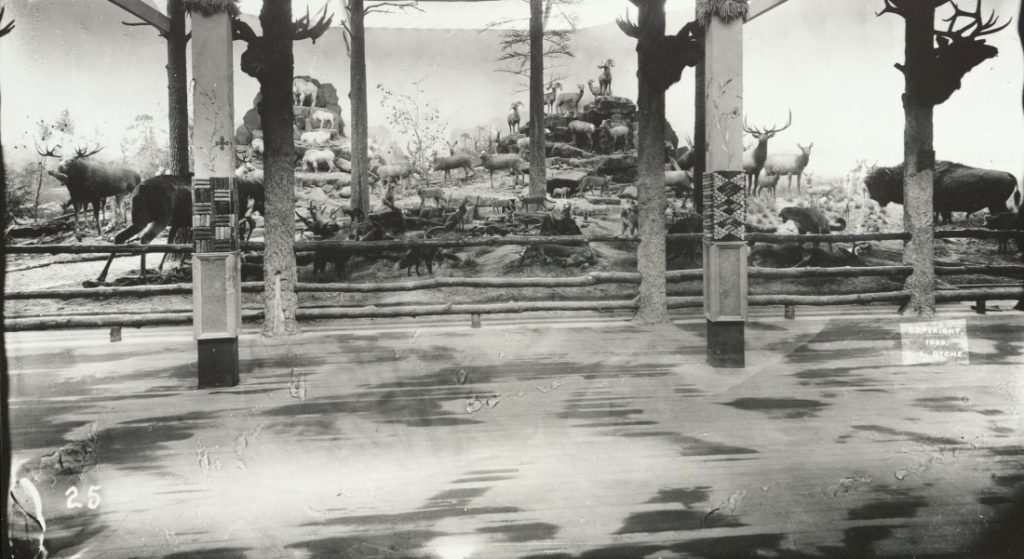
More on the history of the panorama and other exhibits can be found on the Natural History Museum’s website. Spencer Research Library also houses material on Lewis Lindsay Dyche, including his personal papers.
What made me choose the museum for this week? Well, I am a science lover by nature being an Anthropology major. But, the museum is also a great community resource. Not only for learning cool things, but for bonding and making memories.
The KU Natural History Museum offers four floors of exhibits for visitors of all kinds. The museum is open from 9am to 5pm, Tuesday-Sunday for the summer, with suggested donations upon entrance. The museum also offers “Museum from Home” options for those who are unable to visit.
Tiffany McIntosh
Public Services

